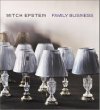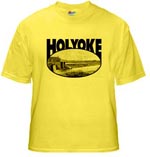by Laurel | July 2nd, 2009
July 2, 1905, page 1
How the Holyoke Men Fared.
Co D Has Lost No Men From Effects of Cuban Campaign Since 1898.
Co D, of Holyoke, while losing a number of men in Cuba and soon after the return home, has so far as is known lost no men from the effects of the campaign since 1898. The record of the company shows the following statistics: —
Number dying in Cuba, three; number dying on the way home or shortly after reaching home, three; number wounded in Cuba, four; number returning badly broken in health, six; number enlisting subsequently in army or navy, five; number mustered out directly after return, 46.
Capt W. J. Crosier and First Lieut R. E. Hunter resigned soon after the close of the war, the latter going south afterward. On May 1, 1904, Capt. F. D. Phillips, who had been promoted from the 2d lieutenancy to the captaincy, resigned, as did Second Lieut. A. F. Reed and First Sergeant W. L. Weymouth, the latter going South. A. F. Foote was elected to the captaincy, Walter H. Brown to be 1st lieutenant and Alexander MacDonald to be 2d lieutenant. Quartermaster Sergeant Edgar R. Train died at Montauk Point on his return home. Sergeant George A. Collier died three days after his return. Both did gallant service and were accorded military funerals. Sergeant Frank G. Mattine died soon after his return home, like the others, of fever contracted in Cuba. Corporal Ruel H. Coit was wounded in Cuba and is now a Holyoke letter carrier. Alexander McDonald went out as a corporal, was promoted to sergeant, and a year ago was made 1st lieutenant, a position he still holds.
Corporal Edward Wagener was promoted to be sergeant on his return , and soon left the city. Corporal Joseph W. Eaton was wounded at San Juan hill by a Mauser bullet which tore out part of his jaw and carried away part of his hand. He was promoted to be sergeant, and then quartermaster sergeant and is still with the company. Henry Lempje, the company musician had previous to the Spanish war seen three years’ service in the regular army, so took life easily. He was discharged with honor and has been employed since at the Chemical paper mill. Samuel C. Bogart, wagoner, is still in the transportation business, being freight conductor on the New York Central railroad. Joseph Bonneville, popularly known as “Bonny,” died in Cuba of yellow fever and was buried near the old railroad station at Santiago, his body being later brought to Holyoke. Corporal E. J. Cain [Earl J.] reenlisted and was honorably discharged in 1904. Edmund Damour was wounded in the back and side at El Caney and crippled for life. He had to come home shortly after and has been unable to do regular work. Antone Dugas was killed at El Caney. A Mauser bullet pierced a cartridge in his belt, which exploded and tore a hole in his abdomen. He lived 8 or 10 hours, and was buried, after his death, in a trench with 21 others. His body was later exhumed and taken to Holyoke. Otto Eger took his discharge, then served three years in the regular navy, came back to Holyoke and re-enlisted January 1, 1905. He is a machinist. Warren A. Graces returned broken in health from rheumatism and has not been able to do a day’s work since his return. Albert E. Fay took his discharge and is now superintendent of the brass foundry department of the United States patent office. George A. Fisher is foreman at a Chicopee Falls factory.
John E. Goss was taken sick the night before the company sailed to Cuba, so did not go. Arthur Juben was the company barber and was mustered out at the close of the war broken in health and now draws a pension by reason of it. He made a hat that was a wonder, he having spent a great part of his time in Cuba sewing in flag and other designs on silk thread. David McBride was the lightest in weight of any of the company. He re-enlisted as a corporal wand was then mustered out. He was taken sick at Montauk Point with fever, and his health was impaired for a long time. Richard Mackay was mustered out after the close of the war and joined the Irish brigade and fought in the Boer war. He is now engaged in the less dangerous occupation of milkman. Edward J. Morrison, being an electrician, took charge of the installation of the telephone system in Santiago. He was discharged, broken in health, and later went to Montreal and worked as he was able in the telephone work.
Harry E. Root, after the close of the Cuban war, enlisted in the 2th United States infantry, and went to the Philippines, returned to Holyoke and re-enlisted, is now corporal and company treasurer. He is employed as boss of the yard of the Riverside paper mills. Jeremiah Scannell was taken ill with dysentery and sent home. Fred W. Slate was wounded in the arm at El Caney; promoted to be Corporal and then to be sergeant, on his discharge enlisted in the United state army. W. H. Tetreault was another boy that was broken in health on his return. He re-enlisted in the company and was made corporal, later retiring. John E. Urmson was mustered out and re-enlisted in the United States army. Fred Vigneua or Vignue [name was probably Vigneux] re-enlisted, was promoted to the corporal and then sergeant, and was then honorably discharged. George Vogel was mustered out and re-enlisted in the Unites States army. James Watson will go down in history as the man that captured Capt. W. J. Crosier’s mule afterward christened “El Caney.” He received a present of $10 and endless fame for so doing. He, too, was mustered out. Samuel Hazelwood died of mud fever in Cuba. He was taken with a sunstroke and partially insane for a time.
The following men were mustered out at the close of the war and are peacefully pursuing various occupations: Lester R. Jackson, mill operative; George N. Keith, Holyoke street railway company; Anthony Keane, Patrick Kilkilly, after re-enlistment, brick mason; Henry Langelier, bootblack stand; John C. Libeck, Springfield armory; George J. Lapointe, mill operative; Alexander McElwain, American pad company; Herman Markert, Holyoke machine company; Emil Menner, Andrew Muirhead, mill operative; Frank A. Pierce, Holyoke street railway; Joseph D. Powers, Holyoke street railway company; Clarence E. Provost, Holyoke street railway company. Charles D. Read, Arthur H. Smith, Thomas Sugrue, Dennis J. Sheehan, George Tinkham, Joseph TInkham, mill operative; Frank T. Turcotte, Jerry A. Haley, Springfield armory; Alfred Wanni, Allen B. Chamberlain, George Burkhardt, George H. Brown, Emil Bouton, Charles E. Beaudreau, Springfield blanket company; William Bazinet, grocery clerk, William Blanchard, T. J. Canaan, George D. Crosby, W. M. Cleveland, Holyoke machine company; Louis Davis, A. Davis & Co; Richard F. Englehardt.
Excerpted from the Springfield Republican.








